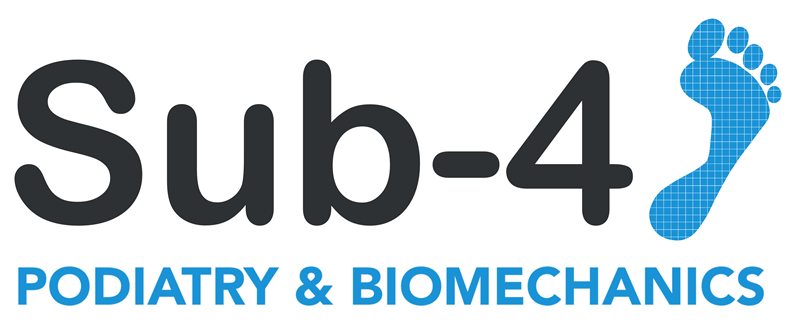High Ankle Sprain
Sub-4 Musculoskeletal Biomechanics Clinic in Staffordshire, West Midlands
High Ankle Sprain
High Ankle Sprain ( also known as Syndesmosis injury) is usually caused by an inversion or dorsiflexion trauma to the syndesmosis.
The connection of the two ankle bones (tibia and fibula) are formed by four ligaments called the syndesmosis. This is the ligament that is frequently injured in high ankle sprains.
Most High Ankle Sprains are usually caused by a sudden twisting, turning or cutting motion while you are running or jumping. This injury is common in athletes playing high impact running sports like football, soccer, rugby, tennis etc.
High Ankle Sprain
Achilles tendinopathy can be a very painful condition affecting not only the Achilles tendon but is also very vital in terms of your lower limb health, as it allows you to lift your foot when you first begin to walk or run. It enables you to move forward, walk or run easily, whilst standing or walking with considerable pressure being placed upon the affected area.
As well as allowing your leg to support your bodyweight an injured tendon can also cause considerable pain. The pain in most cases is usually caused by inflammation within the tendon, although in more extreme cases damage can be caused to other structures in the tendon.
High Ankle Sprain – Signs & Symptoms
Symptoms of a high ankle sprain include pain when pressing in on the tibiofibular ligament at the front of the ankle. This is the ligament which joins the tibia and fibula at the bottom of the leg/top of the ankle.
Swelling and bruising will be seen at the front and outside of the ankle and you will experience difficulty walking.
Pain is reproduced by rotating and dorsiflexing the ankle. This means rotating your ankle with toes and foot pushing upwards.
Diagnosis
The best way to know if you are suffering from High Ankle Sprain, or there are no underlying conditions causing the pain, is to Book a free assessment with Sub-4 clinic. This will help to look at the pain and check if it is a High Ankle Sprain and decide which is the best way to achieve recovery.
High Ankle Sprain – Treatment & Cost
The purpose of a Sub-4 free assessment, is to help explore the pain issue you have and determine what (if anything) can be done to treat your High Ankle Sprain. A Biomechanical Assessment level can be discussed as well, depending on the level of pain or discomfort you are suffering.
Your Recovery… is Our Mission!
We can help you get to the underlying cause of your pain.
Connect with us
MON – FRI: 9:00am -5:00pm
SAT: 8:00am – 12:00
SUN: Closed

